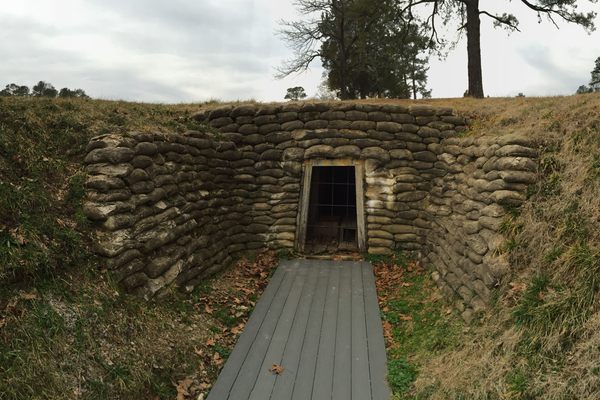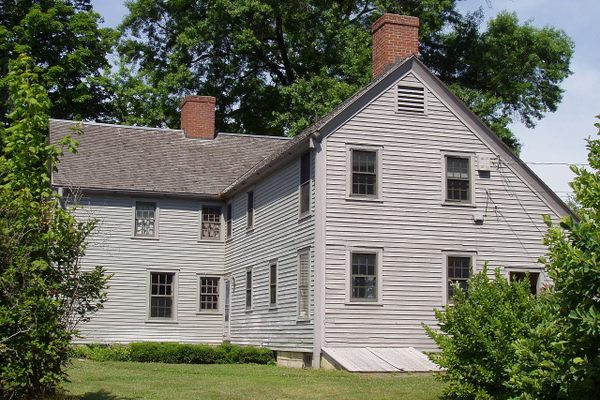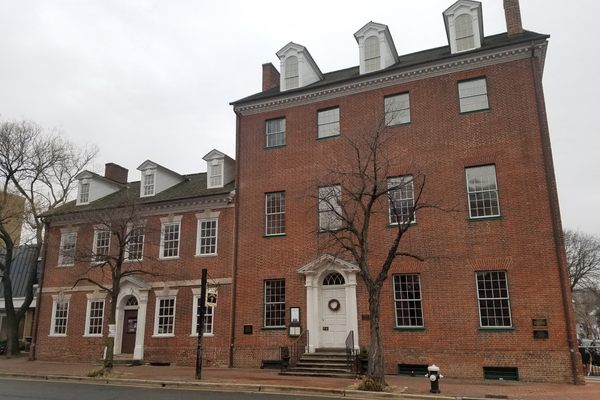AO Edited
Berkeley Plantation
This estate on the banks of the James River was home to a Founding Father, two presidents, a famous bugle melody, and what some say was the actual first Thanksgiving.
The history of the property now known as the Berkeley Plantation begins back in 1619, only 12 years after the establishment of Jamestown. A small group of European explorers would land at a tranquil spot on the banks of the James River and dubbed the land Berkeley Hundred, after a noble family from England. The men, led by Captain John Woodlief, were eager to establish the area as a new settlement. As they took to shore, Woodlief led his men in a religious service to give thanks “to Almighty God,” thanking him for the land and the safety of their voyage. Thus, the first Thanksgiving in North America was held.
Hold on! Hold on, you might say! Where was the turkey? The pilgrims? Wasn’t the first Thanksgiving in Plymouth? You aren’t wrong. That certainly was the first Thanksgiving feast akin to the holiday now celebrated annually, but the first official day of Thanksgiving was held a whole year and 17 days before any pilgrims set foot in New England. This is just one of the many firsts accredited to the sprawling Berkeley Plantation, which has a storied past and an impressive list of former residents.
Eventually, Berkeley was built into a settlement and one of the first ship yards in America. In 1621, America’s first whiskey distillery was built at Berkeley. Only a year later, the settlement was one of several raided in the Jamestown Massacre. Many of the citizens were killed by local Indigenous tribes who objected to the English settlers’ desire to possess their land.
By 1726, an estate had been built at Berkeley that served as a home for the Harrisons, one of Virginia’s most prominent families. Many generations of Harrisons called Berkeley home, including an important figure in the government of Colonial America. Benjamin Harrison V was a member of the House of Burgesses and openly criticized English oppression towards the colonies at a time when many colonists were unsure of speaking out against the crown. Harrison became Virginia’s fifth governor and a Virginia delegate to the Continental Congress, where he signed the Declaration of Independence.
During the Revolutionary War, Berkeley Plantation saw the construction of 18 warships for the American Navy—which made it a target for the infamous traitor Benedict Arnold. Arnold, who was friendly with the Harrison family, led troops to the estate (which had been abandoned thanks to a tip) and proceeded to burn every piece of furniture inside. The Harrison’s living quarters were burned, too, but the flames didn’t damage the sturdy brickwork, which still stands.
Much of the grandeur of the house and gardens at Berkeley Plantation was the product of enslaved laborers of African descent. The total number of people enslaved there is not known, but upon his death in 1791, Benjamin Harrison V owned 110 people. The enslaved worked the estate’s tobacco fields, tended to the grand house, and cared for the Harrison family’s children.
President William Henry Harrison (yes, the guy who died a month into his term) was also born at Berkeley. Before his short-lived presidency, William Henry Harrison was a prolific politician and a dominant force in the development of the region that is now the Midwest. He also served as a major general in the War of 1812. (His grandson, Benjamin Harrison, managed to hold the role of POTUS for longer, from 1889 to 1893.)
During the Civil War, Berkeley served as a base of sorts for the Union Army, which turned the grand house into a hospital. During an 1862 raid on the Potomac led by Confederate General J.B. Stuart, a cannonball flew into the side of the modern-day kitchen building, where it remains implanted to this day.
That same year, while stationed at Berkeley, General Daniel Butterfield composed a distinctive bugle melody. Butterfield whistled a tune in his quarters, then worked with his brigade’s bugler, Private Oliver Wilcox Norton, to perfect the 24-note song. The song, called “Taps,” was played to signal the end of the day and quickly became a military tradition.
In 2018, Harriet, a biographical film about the life of Harriet Tubman, used the Berkeley site as a set, standing in for the Maryland plantation where Tubman was held in slavery. After filming was complete, the production donated two period-accurate slave quarters to the plantation, which have been turned into interactive centers where visitors can learn about the history of enslaved people at the estate. Most of the slave quarters at Berkeley Plantation were burned down during the Civil War.
Know Before You Go
Make sure to check the website for hours, but Berkeley is open every day of the year besides Christmas and Thanksgiving (ironically).

































Follow us on Twitter to get the latest on the world's hidden wonders.
Like us on Facebook to get the latest on the world's hidden wonders.
Follow us on Twitter Like us on Facebook